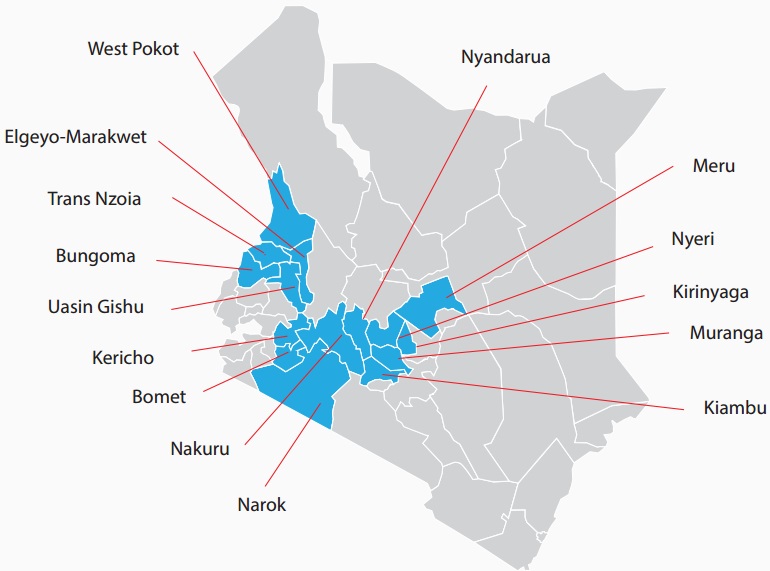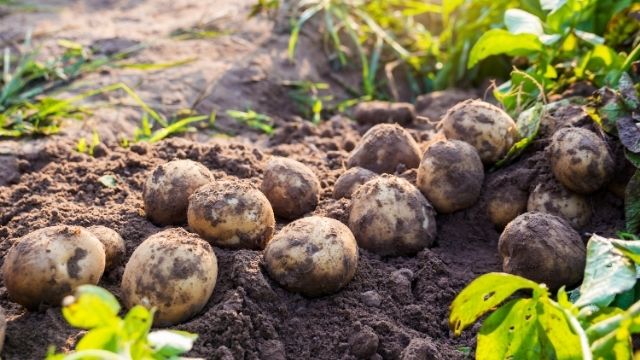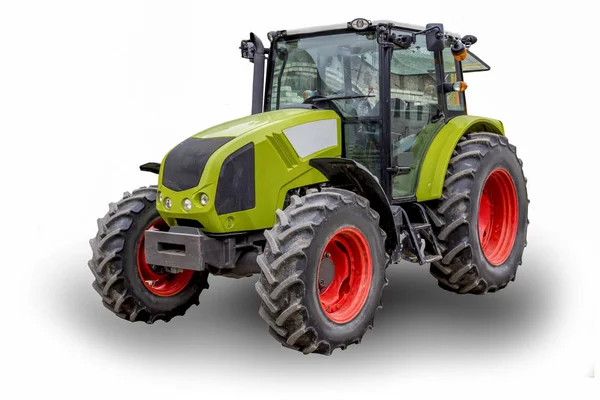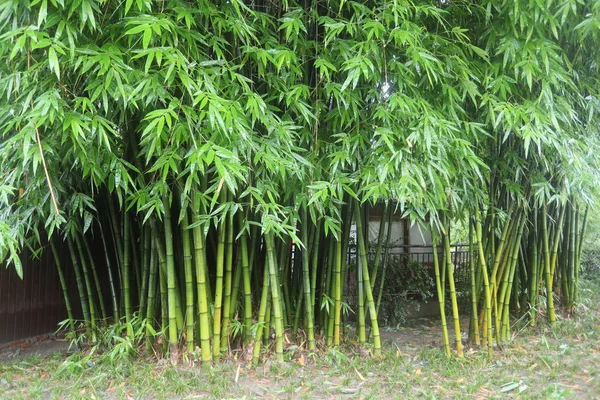Are you wondering if potato farming in Kenya is really profitable? In this analysis, we will look at the estimated revenues, costs, and profits you can get for growing the Shangi potato variety using the cost and benefit analysis. The guide concludes with tips to deal with the challenges of potato farming in Kenya.
Potato farming plays a critical role in Kenya’s economy and food security. As a high-value crop, potatoes provide livelihoods for millions of farmers, traders, and processors. They are a staple food in many households and have significant demand in urban markets. However, challenges such as limited access to certified seeds, pests, diseases, and poor storage facilities often hinder productivity.
Shangi Potato Variety
Shangi potatoes are a game-changer for Kenyan farmers, occupying over 80% of the country’s potato production area. Officially released in 2015, Shangi is the most popular variety due to its quick maturity, high yield potential, and adaptability to various agroecological zones. Known for their cream skin, white flesh, and oval shape, Shangi potatoes are versatile and meet the needs of both farmers and consumers.
Shangi potato farming benefits.
Shangi potatoes enjoy strong market demand due to their taste, texture, and affordability.
- Rapid Growth: Ready to harvest in just 75-90 days, allowing for multiple crop cycles per year.
- Impressive Yields: Potential to produce 10-16 tons per acre under optimal conditions. with an average of 12.5 tons based on various reports.
- Strong Market Appeal: A favorite in local markets due to its excellent taste and texture. It seems likely that prices range from Ksh 25-35 per kg, with recent trends in February 2025 showing Ksh 30-40 per kg in major markets like Nairobi.
- Versatile Use: Perfect for mashing, boiling, roasting, and making chips.
Where to grow potatoes in Kenya.

The main potato-growing counties in Kenya are Nakuru, Nyandarua, Kiambu Meru, Bomet, Narok, and Bungoma counties as shown in the diagram below. They have some of the best agro-climatic characteristics.
- Altitude: Ideal altitudes range from 1,500 to 3,000 meters above sea level.
- Soil: Potatoes grow best in well-drained, fertile, medium loams with a pH of 5.5–7.5
- Rainfall: Potatoes need 850–1,200 millimeters of well-distributed rainfall during the growing season. In drier regions, invest in irrigation as needed.
- Temperatures: Potatoes grow best in cool temperatures, with an ideal range of 15–20°C
How Profitable is Shangi Potato Farming in Kenya?
Shangi potato farming offers substantial returns on investment, driven by high yields and strong market demand. However, profitability hinges on factors like yield per acre, market prices (which can fluctuate), and input costs (seeds, fertilizers, labor). With proper management, farmers can achieve net profits ranging from Ksh. 130,000 to Ksh. 300,000 per acre per season.
Assumptions for Profit Analysis
- Yield per Acre: Research suggests 10-15 tons per acre, with an average of 12.5 tons for calculations, based on farmer testimonials and agricultural extension services.
- Selling Price per kg: It seems likely that prices range from Ksh 25-35 per kg, with an average of Ksh 30 for conservative estimates, reflecting recent market trends in February 2025.
Shangi Potato Farming Revenue Estimates
Shangi potatoes have an impressive yield potential when grown under optimal conditions. On average, farmers can harvest 30–40 tons per acre. Seed quality, spacing, soil fertility, water availability, and pest management significantly affect yields.
Approximately 85% of harvested shangi potatoes are marketable, with losses due to damage, disease, or greening (exposure to sunlight). Thus, from 12,500 kg, about 10,625 kg is sellable.
| One Acre | 1/4 Acre | |
|---|---|---|
| Average Potential Yield | 12,500 kg (12.5 tons) | 3,125 kg (3.125 tons) |
| Marketable Yield (85%) | 10,625 kg (10.625 tons) | 2,656.25kg (2.65625 tons) |
| Average Selling Price/Kg | 30 | 30 |
| Total Revenue | 25,500×30 =Ksh 318,750 | 2,656.25 × 30 =Ksh 79,687.50 |
As shown above, the gross revenue for farming an acre of shangi potato i = Ksh 375,000, adjusted for marketable yield (10,625 kg * Ksh 30 = Ksh 318,750) for a conservative estimate.
Given price variability, at Ksh 35 per kg, revenue is 12,500 kg * Ksh 35 = Ksh 437,500, or Ksh 371,875 for marketable yield.
Shangi potato farming Costs
Wondering the amount of money you will spend to plant an acre of shangi potato in Kenya?
The evidence leans toward costs of Ksh 120,000 to Ksh 200,000, with an average of Ksh 160,000, including seeds, fertilizers, labor, and irrigation, based on reports from the Tegemeo Institute and Kenya Agricultural and Rural Development Project.
| Expense | Cost (Ksh./Acre) | Cost (Ksh./1/4 Acre) |
|---|---|---|
| Leasing Land (optional) | 12,500 | 3,125 |
| Land Preparation | 7,500 | 1,875 |
| Soil Testing | 2,000 | 500 |
| Seed Potatoes | 67,500 | 16,875 |
| Fertilisers | 20,000 | 5,000 |
| Pesticides/Fungicides | 10,000 | 2,500 |
| Labour | 23,000 | 5,750 |
| Irrigation | 10,000 | 2,500 |
| Transport | 5,000 | 1,250 |
| Other Costs | 5,000 | 1,250 |
| Crop Insurance (optional) | 3,000 | 750 |
| Weed Management | 11,500 | 2,875 |
| Earthing Up (Hilling) | 9,000 | 2,250 |
| Harvesting | 10,500 | 2,625 |
| Post-Harvest Handling | 6,000 | 1,500 |
| Marketing | 10,000 | 2,500 |
| Total (without land lease) | 190,500 | 47,625 |
Securing Land
The key success factor to profitable potato farming is doing it on a fertile piece of land in areas like Nyandarua, or Kuresoi. You can do it on either owned or leased land, depending on your budget. Leasing land for potato farming ranges from Ksh. 5,000 to Ksh. 20,000 per acre depending on location.
Factors to Consider
- Proximity to market access or main roads to ease transportation.
- Previous history of potato farming in the area.
- Avoidance of river banks or frost-prone areas, as these can lower your potato harvests.
Land Preparation and Planting
Effective land preparation sets the stage for healthy potato growth. it will cost you Ksh. 5,000–10,000 per acre for labor or tractor services.
- Plowing and Harrowing: Plough the land deeply (30 cm) to break up compacted soil and improve aeration. Follow up with harrowing to create a fine seedbed.
- Organic Matter Addition: Mix organic manure with the soil during the harrowing stage at a rate of 4 tonnes per acre or 200 kg of fertilizer (e.g., DAP)
- Planting Depth, Ridging, and Spacing: Plant seed potatoes at a depth of 10-15 cm, maintaining a spacing of 30 cm between plants within ridges spaced at 75 cm apart. This spacing allows for adequate sunlight penetration and air circulation, reducing disease risk.
Potato Seed Selection & Preparation
Always plant certified Shangi seed potatoes from reputable suppliers such as Kisima Farm, ADC Molo, or local agricultural extension offices. You can find the contact information of certified potato seed producers on the National Potato Council of Kenya website. Certified seeds are disease-free and have been tested for high-yield potential.
While Shangi is popular, consider other potato varieties like Kenya Karibu or Dutch Robyjn if conditions are favorable. Research the specific requirements and market demand for these alternatives.
If you are supplied with larger seed potatoes, cut them into pieces with at least one eye per piece. Allow the cut surfaces to heal for 24 hours before planting to reduce the risk of rot.
Chit seed potatoes by placing them in a well-lit area with cool temperatures (10–15°C) for 2-3 weeks before planting. This encourages sprouting and can lead to earlier harvests.
Soil Testing and Water Analysis
To know the amount of fertilizers and manure you will use, conduct soil tests before planting to determine nutrient levels, pH, and organic matter content. This will guide your fertilizer application and amendments needed to create optimal growing conditions.
Shangi potatoes prefer well-drained, loamy soils with a pH of 5.5 to 7.0. Heavy clay or overly sandy soils can hinder growth, so consider soil amendments to improve texture and fertility.
Analyze the quality of your irrigation water to ensure it is free from contaminants and suitable for crop irrigation.
Planting
Plant the seed potatoes at a depth of 10-15 cm in ridges spaced 75 cm apart, with 30 cm between plants within rows.
You will need 13,000–15,000 tubers per acre costing around Ksh. 3,000–4,000 per 50 kg bag.
This spacing promotes proper air circulation and allows tubers enough room to grow. Apply DAP fertilizer at planting to boost root and tuber development, and follow up with top-dressing using CAN three weeks after emergence. Ensure the sprouts face upwards when planting for uniform growth.
Fertilization
looking for the best fertilizers for potato farming in Kenya? Apply a basal fertilizer during land preparation by mixing organic manure with the soil during the harrowing stage at a rate of 4 tonnes per acre. Alternatively, you can use 200 kg of planting fertilizer (e.g., DAP) at planting time to provide essential nutrients for early growth.
Topdress with CAN at 200-250 kg per acre (costing Ksh. 6,000–7,500) about 3–4 weeks after planting to support rapid vegetative growth. Alternatively, use NPK 23:23:0 at 150-200 kg per acre (Ksh. 8,000–10,000). At the tuber initiation stage (6–8 weeks after planting), apply Muriate of Potash (MOP) at 50-100 kg per acre (Ksh. 4,000–6,000) to enhance tuber size, starch content, and skin quality. Since Shangi has a short growth cycle (2.5–3 months), proper timing of fertilizer application is crucial for high yields.
If you go for foliar feeding, Easygro Flower & Fruit or Calcium Nitrate should be sprayed at 10g per liter of water, with 2-3 applications during tuber bulking, costing Ksh. 3,000–5,000 per acre. Seaweed extracts or micronutrient blends (Zinc, Boron, Magnesium) improve stress resistance and tuber quality, costing Ksh. 2,000–4,000 per acre.
The total fertilizer cost for Shangi potatoes per acre ranges between Ksh. 15,000–25,000, depending on product choice and market prices.
Irrigation Management for Shangi Potato
Proper irrigation management for Shangi potato ensures optimal tuber development and prevents yield losses. The best methods are drip irrigation, costing Ksh. 50,000–80,000 per acre for setup, and furrow irrigation, which is cheaper but requires more water. A well-managed drip system uses 3,000–5,000 liters of water per acre daily, while furrow irrigation requires 10,000–15,000 liters per session. Farmers should monitor soil moisture and irrigate when the top 2 inches feel dry. The estimated monthly irrigation cost for Shangi potato farming ranges between Ksh. 8,000–15,000 per acre, depending on rainfall and water availability.
Crop Protection for Shangi Potato
Protecting Shangi potatoes from pests and diseases is key to achieving high yields. Common diseases include late blight, early blight, bacterial wilt, and PVY. Preventative sprays using Mancozeb (Dithane M-45) at Ksh. 1,500 per kg should be applied every 7–10 days, while Ridomil Gold (Ksh. 4,500 per kg) can be used to control severe blight outbreaks.
Pests like potato tuber moths, aphids, and leaf miners should be managed using Lava 50EC (Ksh. 2,500 per liter) or Belt SC (Ksh. 3,500 per liter). Using Integrated Pest Management (IPM) strategies such as certified seed, crop rotation, and regular scouting reduces the need for chemical use. The total pest and disease control cost per acre of Shangi potato is estimated at Ksh. 10,000–18,000 per season.
Weed Management for Shangi Potato
Weeds compete with Shangi potato plants for nutrients, water, and sunlight, reducing yields. Manual weeding costs Ksh. 3,000–5,000 per session, with at least two sessions per season. Farmers can also use selective herbicides like Sencor 70WG (Ksh. 2,500 per 100g) or Stomp 455 CS (Ksh. 4,000 per liter) to reduce labor costs.
Mulching is another effective method, costing around Ksh. 10,000 per acre for materials like straw or plastic mulch. The total weed control cost per acre for Shangi potatoes ranges between Ksh. 8,000–15,000, depending on the method used.
Earthing Up (Hilling) for Shangi Potato
Earthing up is essential in Shangi potato farming to prevent greening, improve tuber size, and support plant growth. The first earthing up should be done when plants reach 20 cm in height, with a second earthing up two weeks later.
Manual hilling costs Ksh. 3,000–5,000 per acre per session, while mechanized hilling costs Ksh. 6,000–10,000, depending on fuel and labor. The total hilling cost per acre of Shangi potatoes is Ksh. 6,000–12,000, depending on the method used.
Harvesting Techniques for Shangi Potato
Harvesting at the right time ensures high-quality Shangi potatoes with minimal bruising. The best harvest time is when the foliage yellows and dies back, usually 90 days after planting. Manual harvesting costs Ksh. 5,000–8,000 per acre, while mechanized harvesting (tractor or harvester rental) costs Ksh. 10,000–15,000 per acre.
To reduce damage, farmers should use tools like potato forks (Ksh. 1,500 each) instead of jembes. The total harvesting cost per acre for Shangi potatoes is Ksh. 6,000–15,000, depending on the method used.
Post-Harvest Handling for Shangi Potato
Proper post-harvest handling ensures Shangi potatoes remain fresh and marketable. Curing potatoes in a dark, well-ventilated room at 15°C for 10–14 days helps heal minor wounds and extend shelf life. The curing and sorting cost per acre is around Ksh. 5,000–7,000. Storage facilities cost between Ksh. 30,000–50,000 for small-scale units, or farmers can rent storage at Ksh. 1,500 per month per ton. Proper storage prevents sprouting and rot, ensuring high-quality produce reaches the market.
Marketing Strategies for Shangi Potato
Marketing plays a key role in Shangi potato farming profitability. Best-selling outlets include local markets, brokers, aggregators, processors (e.g., crisp-making companies), and direct supply to supermarkets or schools. As of 2024, farm gate prices for Shangi potatoes range from Ksh. 25–40 per kg, depending on demand and season. Farmers can improve their profits by:
- Selling directly to buyers to avoid broker exploitation.
- Sorting and grading to fetch premium prices.
- Leveraging digital platforms to reach bulk buyers.
- Joining cooperatives to access better market prices.
The total marketing cost per acre for Shangi potatoes (including transport, packaging, and brokerage fees) is Ksh. 5,000–15,000, depending on the distance and market type. A strong marketing strategy can increase profits by 20–50% compared to selling through brokers alone.
Read More:
Please download the best shangi Potato farming PDFs for Free on the links below.




very helpful article please update another for 2023 and the cost of production